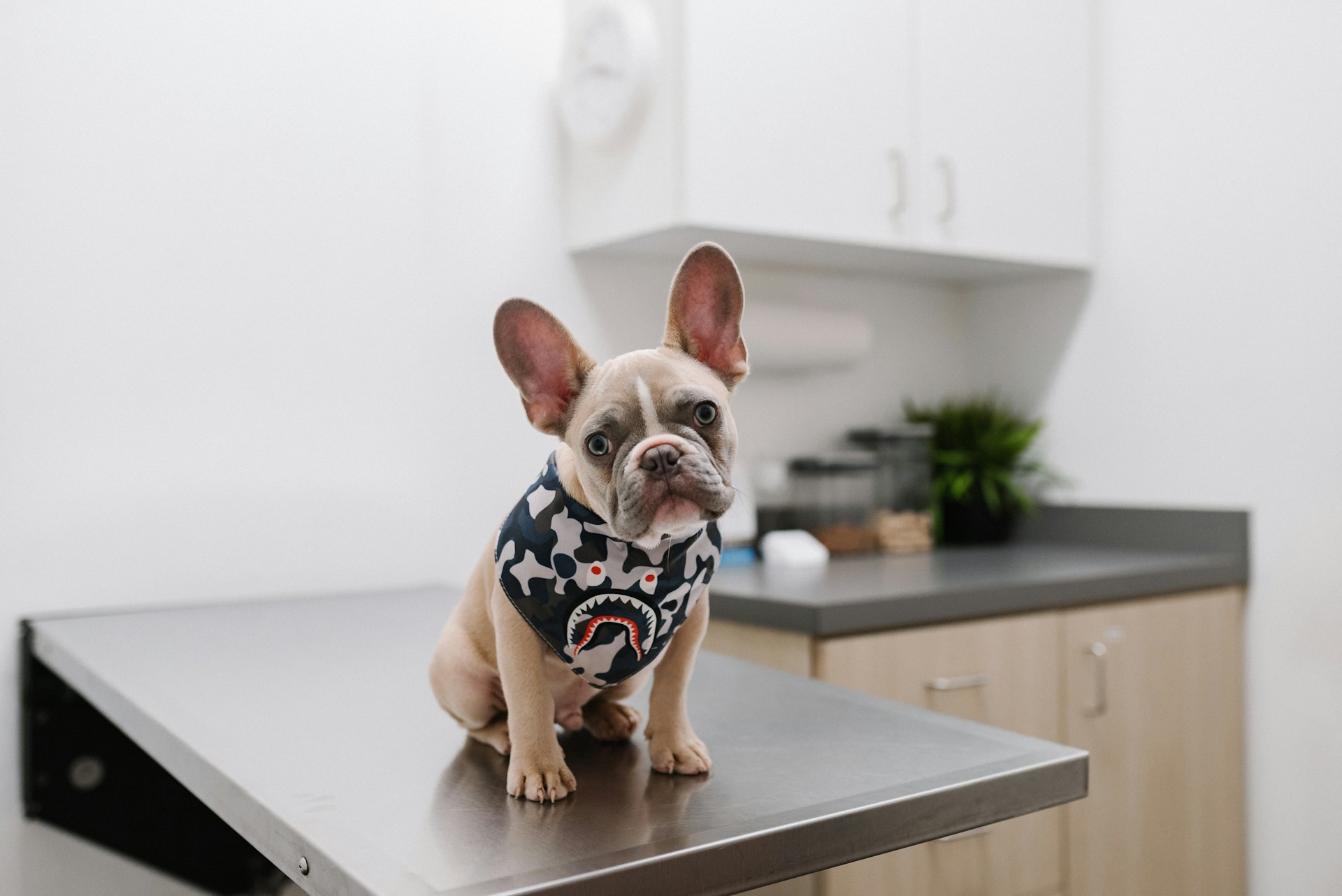Vaccines have played a critical role in controlling infectious diseases and pandemics. At its core, they help the host figure out how to fight a disease agent should they try to infect them. They have also helped eradicate diseases such as smallpox and are considered the most successful medical intervention in history.
Most, if not all, of these vaccines were developed to protect humans from pathogens. However, focusing only on vaccinating human populations can cause us to miss other possibilities to limit the spread of disease. That’s especially true since we have another avenue available now: animal vaccination.
Zoonosis, the spread of disease from animals to humans, is a primary cause of pandemics. Our constant contact with animals and inhumane animal handling practices have contributed to the start of major pandemics, from HIV/AIDS and COVID to pandemic influenza.
But we’re not advocating for humans to end all contact with animals. Such an impossibility would also remove the good that human-animal interactions have done for our planet. Rather, animal vaccines may help protect the animals that contribute to the zoonotic spread of diseases.
To highlight how important animal vaccines are in keeping animals and humans safe, I found a moment to chat with Tom Tillett, the CEO of MBF Therapeutics. His team is creating a novel DNA vaccine platform that makes developing animal vaccines easier and more cost-effective. He will also give a talk at the World AMR Congress, where he will share how animal vaccines prevent zoonotic spillover into humans.
Read on to learn more about animal vaccines and see the insights he will share in greater detail at this fall’s World AMR Congress!
The interview
PN: Let’s begin by talking with a primer on vaccines. How do they prevent disease, and what makes them work so well?
TT: Vaccines are any biological preparation that gives the host’s immune system an acquired immunity against an infectious disease agent. When you become vaccinated against a pathogen, you are helping suppress the disease by creating an antibody or T cell response. That means that when you’re exposed to the pathogen, you will not feel its worst effects. I make this point clear because B cell vaccines do not treat the root causes of the disease. They’re used to minimize its spread and prevent people from being fatally harmed by it. However, T cells because they kill the cells where the virus is replicating, have the ability to fight the root cause of the disease.
PN: Vaccines have also been developed for animals to elicit similar immune responses. But animals aren’t humans. What differences would arise when developing vaccines for animals, and how does it affect animal vaccine production?
TT: The mechanisms of animal vaccination are quite similar to human vaccination in that B cells or T cells are primed to fight off and remember the pathogens they encounter. The primary differences, however, lie in the process of developing and manufacturing them:
- Ability to circumvent artificial models: First, animal vaccine development has the benefit of faster development times at lower costs. We can begin with clinical testing on the actual animal we’re vaccinating and the disease pathogen we’re trying to protect the animal against rather than using an artificial mouse model.
- Access to challenge studies: Second, we can run early challenge studies, ensuring that we are evaluating our vaccines against a specific pathogen. This enables subsequent studies to be of shorter duration and involve fewer subjects. It also means we can run necropsy analyses that can help to answer why our vaccines are working.
- Accelerated large-scale studies: The next phase of testing allows us to run larger studies more quickly, providing greater bandwidth to generate good safety data as well as evaluating a candidate’s ability to block transmission of the pathogenic agent. All of this is particularly important as we want to evaluate the safety and effectiveness of next-generation vaccine platforms.
Despite the advantages that companies developing animal vaccines have in bringing novel vaccines to market, these companies struggle with the relatively small amounts of grant funding available to them. The animal health market is a great place to test and evaluate novel vaccine platforms but there is little government support for this type of work by animal health companies.
PN: That’s quite a shame in light of the risks that come with the spread of infectious agents from animal vectors to humans.
TT: Indeed. History has shown that most pandemics start in animals. They eventually mutate in a way that they can begin infecting humans. Developing more effective vaccines in animal health that are broadly effective is one way to help stop pandemics from occurring in the first place, such as treating poultry for Highly Pathogenic Avian Influenza (HPAI). Animal vaccines can also effectively address pandemic risks in humans when they originate in animals such as bats. In fact, a wide range of zoonotic diseases can be best addressed by vaccinating animal populations. Having a rapidly adaptable platform and gaining experience developing vaccines against specific pathogen families – influenza, coronaviruses, etc. would markedly increase the speed of response to new spillover events and potentially prevent epidemic/pandemic spread.
PN: Given the importance of animal vaccines in public health, I see you’ve spent considerable time developing vaccine delivery systems. What factors affect which vaccine delivery system to employ when administering a vaccine?
TT: The #1 consideration to make when developing a vaccine delivery method is to determine their effectiveness in delivering the DNA payload to the required cells. Historically, viral vector vaccines have been the gold standard for delivery because they replicate what the viral pathogen is trying to do when it targets cells: inject DNA into the cells of the animal and allow replication of the DNA in those cells. However, using viral vectors comes with limitations that reduce vaccine delivery efficiency:
- Limited payload: Viral vectors have a limited payload. Only so much of the vaccine components can be delivered inside its head, the capsid.
- Antibody production: Even if enough of the vaccine can be introduced inside the vector, the immune system can easily trigger the development of antibodies against the vector. These antibodies would negate the effectiveness of a viral vector vaccine.
- Costs: Developing and manufacturing a vaccine is a costly venture. Building and priming the facilities to produce vaccines can cost US$50-500 M for a vaccine against a single antigen.
PN: That’s not to mention identifying what kinds of cells the vectors will target! Now, how does CaptaVax address the challenges of producing a vaccine delivery system?
TT: CaptaVaxTM is the delivery component of the T-Max PrecisionTM vaccine platform. CaptaVax are nanoparticles that deliver circular DNA, also known as plasmids, directly to dendritic cells. Our work at MBF Therapeutics has demonstrated five traits of CaptaVax that make them an ideal delivery system for DNA vaccines in animals:
- First, Captavax can be at least as effective at delivering DNA as viral vectors.
- Second, because it is non-viral, Captavax can be used repeatedly without risk of generating antibodies.
- Third, CaptaVax can deliver large payloads, allowing multiple full-length antigens to be efficiently delivered.
- Fourth, they are biodegradable, so they will dissolve relatively quickly after they deliver their payload to the cell. They also do not accumulate in the body
- Lastly, the Captavax vaccine delivery system is inexpensive to manufacture.
PN: Seeing that your DNA vaccine platform targets dendritic cells, I understand that these cells specifically are an ideal target for delivering a vaccine. What about them makes them ideal?
TT: Dendritic cells are a special kind of innate immune system cell. Once they ingest their viral targets, they preserve useful information from the ingested particles that activate adaptive immunity. In this process, the dendritic cells educate other immune cells such as T cells by telling them what to look for in an abnormal cell, such as one infected by a virus.
Now, many of the dendritic cells are associated with and adjacent to barrier tissues. These include the skin and mucus membranes of the gastrointestinal tract and mucosal system. Biologically, this makes sense. All pathogens must pass through a barrier to enter the body and cause disease. That’s why dendritic cells are an ideal vaccine recipient. They flow through the circulatory system, ready to find any antigen they encounter in the blood.
PN: I suppose that’s why many vaccines are administered through an intramuscular route.
TT: Exactly. Delivering DNA to muscle tissue means that the antigens need to be made in the muscle cell and then be expressed to circulate in the bloodstream. Once the resulting antigen is produced, the antigen must find a dendritic cell that will engulf and process it. The dendritic cells would then educate T cells to recognize the specific antigen(s) in a future infection event. A DNA vaccine should hence stop the pathogen at the point of entry into the body. This would avoid disease to the animal and reduce the pathogen load shed from the body. In turn, administering an effective animal vaccine would reduce the risk of spread to other animals. That feature is why our T Max Precision vaccines are administered via mucosal barrier tissues.
Our T-Max Precision vaccines can also identify multiple natural full-length antigens present in the core conserved regions of the virus, allowing us to make universal vaccines that are broadly effective. With our vaccines, we also incorporate immunomodulators that critically stimulate the innate immune system. When all of these features work together, we create a barrier in the mucosal tissues that blocks both infection and transmission of the virus.
Author
-

Paul Naphtali is a seasoned online marketing consultant. He brings to the table three years of online marketing and copywriting experience within the life sciences industry. His MSc and PhD experience also provides him with the acumen to understand complex literature and translate it to any audience. This way, he can fulfill his passion for sharing the beauty of biomedical research and inspiring action from his readers.
View all posts




